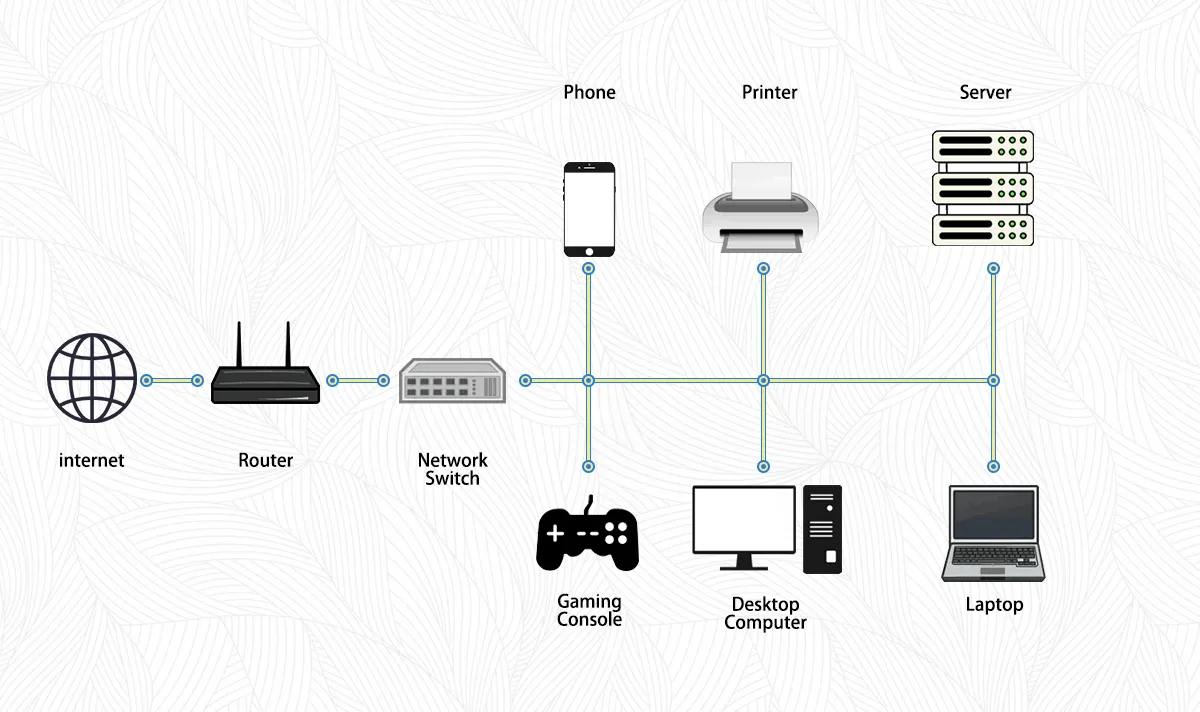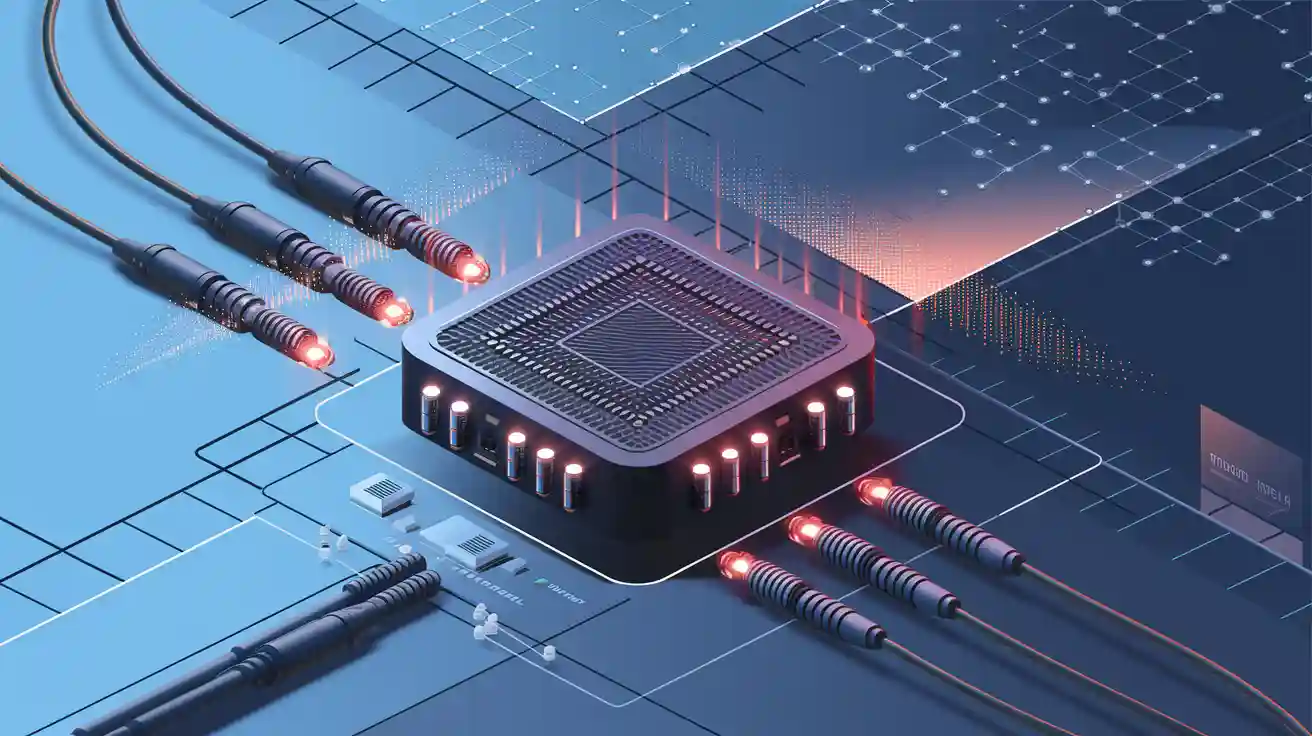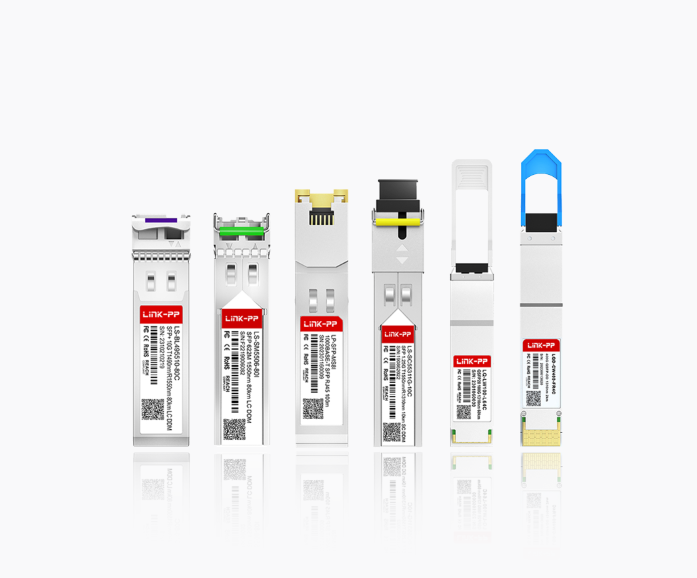
Ever wondered how dozens of devices in your office seamlessly share files, access the internet, and print documents simultaneously? Or how massive data centers handle incredible volumes of traffic? The unsung hero making this possible is the network switch. Far more than just a box with blinking lights, it's the fundamental intelligent traffic director for virtually every Local Area Network (LAN) and wide-area connectivity. Let's dive deep into what switches are, how they work, their diverse types, and why choosing the right components, like LINK-PP optical transceivers, is critical for peak performance.
Key Takeaways
A network switch connects devices in a local network and sends data only to the device that needs it, making your network faster and more efficient.
Switches use MAC address tables to direct data accurately, reduce traffic congestion, and prevent data collisions for smoother communication.
Managed switches offer advanced control like VLANs and traffic prioritization, while unmanaged switches provide simple plug-and-play connectivity.
Switches differ from routers and hubs by focusing on local device communication with better speed, security, and less network congestion.
Using switches improves network performance, supports scalability, and helps manage bandwidth, but they require regular maintenance to avoid issues.
What is a Network Switch?

A network switch (often called an Ethernet switch) is essential networking hardware that provides wired connectivity to other networking equipment and devices using packet switching to receive and intelligently forward data to the destination device.
Network switches transmit packets using their physical ports over fiber or copper twisted-pair cabling to connect access points, IoT devices, computers, and other network equipment. They range in size from compact layer 2 Ethernet switches to large, high density modular switches with hundreds of ports supporting speeds up to 100GbE and deliver features such as Power over Ethernet (PoE), Layer 3 routing, high availability (HA), and built-in analytics.
Tip: You can use a switch to expand your home or office network easily. Just plug in your devices, and the switch manages the connections for you.
You see switches everywhere—from small home networks to large enterprise data centers. They support full-duplex communication, which means devices can send and receive data at the same time. This feature boosts your network speed and reduces delays.
Key Functions
A switch does more than just connect devices. It performs several key functions that keep your network running smoothly:
Direct Data Forwarding: The switch reads the MAC address of each incoming data packet and sends it only to the correct device. This reduces network congestion and prevents data collisions.
MAC Address Table: The switch keeps a table that maps each device’s MAC address to a specific port. When a new device connects, the switch learns its address and updates the table. This process helps the switch deliver data efficiently.
Traffic Segmentation: By creating separate collision domains for each connected device, the switch prevents data collisions and improves overall network performance.
Broadcast Control: The switch limits broadcast traffic, so only necessary devices receive certain messages. This keeps your network organized and efficient.
VLAN Support: Advanced switches let you create Virtual Local Area Networks (VLANs). You can group devices logically for better security and easier management.
Loop Prevention: The switch uses protocols like Spanning Tree Protocol (STP) to prevent network loops, which can cause major disruptions.
Power over Ethernet (PoE): Some switches supply power to devices like cameras or phones through the same cable used for data.
Connectivity Evolution: Copper, Fiber, and Optical Transceivers
Copper Ports (RJ45): Ubiquitous, using twisted-pair cables (Cat5e, Cat6, Cat6a, Cat8) for distances up to 100 meters. Ideal for connecting desktops, printers, and access points.
Fiber Optic Ports (SFP/SFP+/QSFP+/etc.): Essential for high-speed, long-distance (meters to kilometers), and noise-immune connections. Require optical transceivers.
How a Switch Works: Intelligent MAC-Based Forwarding
Learning: When a device (e.g., Computer A) sends data, the switch examines the source MAC address and records which port Computer A is connected to in its MAC Address Table.
Forwarding: When data arrives destined for a specific MAC address (e.g., Printer B), the switch consults its table. If Printer B's MAC address is found, the switch forwards the data only out of the specific port connected to Printer B.
Filtering: If the destination MAC address is unknown (not in the table), the switch floods the frame to all ports except the one it came from. Once the destination device responds, its MAC/port mapping is learned.
Flooding Exceptions: Frames destined for multicast or broadcast MAC addresses are also flooded by default.
Loop Prevention: Using protocols like STP (Spanning Tree Protocol), switches prevent network loops that can cause crippling broadcast storms.
This process creates dedicated, collision-free communication paths between devices, drastically improving security (devices only see traffic meant for them), maximizing available bandwidth, and enabling full-duplex communication (simultaneous send and receive).
Types of Network Switches
Switches come in various forms to suit specific needs:
Feature | Unmanaged Switches | Managed Switches | Smart Switches (Web-Managed) | PoE Switches | Virtual Switches | Layer 3 Switches |
|---|---|---|---|---|---|---|
Control | Plug-and-Play, No Configuration | Full Configuration & Monitoring (CLI/Web/GUI) | Limited Web-Based Configuration | Provides Power + Data (PoE/PoE+) | Software in VM Host | L2 Switching + IP Routing |
Complexity | Simplest, Lowest Cost | Most Complex, Highest Cost | Moderate Complexity & Cost | Can be Managed or Unmanaged | Software Defined | Complex, High Cost |
Ideal For | Home, Simple SOHO LANs | Large Biz, Data Centers, Complex Networks | SMBs Needing Basic Control | IP Phones, APs, Cameras, IoT | Virtualized Environments | Core/Distribution, VLAN Routing |
Key Capabilities | None | VLANs, QoS, SNMP, Security, LACP, STP, Port Mirroring | Basic VLANs, QoS, Port Mirroring | Power Delivery over Ethernet Cable | VM Network Traffic | IP Routing, Inter-VLAN Routing |
Where are Switches Used? Everywhere!
Home Networks: Connecting PCs, laptops, smart TVs, game consoles, and printers to the router.
Small/Medium Businesses (SMBs): Connecting workstations, servers, printers, phones, and APs. Smart switches or managed switches offer valuable control.
Enterprise Networks: Forming complex hierarchical networks (Access, Distribution, Core layers) across buildings/campuses. Utilize high-density managed switches, often interconnected via fiber optics and optical transceivers.
Data Centers: The absolute backbone. Utilize:
High-Speed Switches (10G/25G/40G/100G/400G): Top-of-Rack (ToR), Leaf, and Spine switches.
Spine-Leaf Architecture: Eliminates traditional aggregation layer, reducing hops and latency. Leaf switches connect servers/storage; every leaf connects to spine switches. Requires dense optical transceiver deployments.
Fabric/Mesh Networks: (For ultra-low latency HPC) Making every device appear on one giant switch.
Industrial Environments: Ruggedized switches designed for harsh conditions.
The Critical Role of Optical Transceivers
Optical transceivers (like SFP, SFP+, QSFP28 modules) are the unsung heroes of high-speed networking. They plug into switch ports to convert electrical signals to optical signals (light) for transmission over fiber optic cables, and vice-versa. Choosing high-quality, compatible, and reliable optical transceivers is paramount for achieving the desired performance, stability, and reach in fiber links. This is where LINK-PP stands out.
LINK-PP: Your Trusted Partner for High-Performance Fiber Connectivity
Ensure seamless integration, optimal performance, and cost-efficiency for your critical fiber switch links with LINK-PP optical transceivers. We offer a comprehensive range of MSA-compliant, rigorously tested modules for all major standards and distances, including essential solutions for data center spine-leaf architecture and high-bandwidth uplinks:
Essential LINK-PP Models for Your Network:
LS-SM311G-10C: 1000BASE-LX, 1310nm, up to 10km (Single-mode Fiber) - Ideal for long-distance uplinks.
LS-MM851G-S5C: 1000BASE-SX, 850nm, up to 550m (Multimode Fiber) - Cost-effective for shorter runs.
LS-MM8510-S3C: 10GBASE-SR, 850nm, up to 300m (OM3 MMF) - *Common in 10G data center/server links.*
LS-SM3110-10C: 10GBASE-LR, 1310nm, up to 10km (SMF) - *Perfect for long-reach 10G uplinks between buildings or core switches.*
LQ-M85100-SR4C: 100GBASE-SR4, 850nm, up to 100m (OM4 MMF) - *High-density 100G connectivity within racks or short distances.*
LQ-LW100-LR4C: 100GBASE-LR4, 1310nm, up to 10km (SMF) - Essential for high-speed backbone/core links over distance.
LINK-PP transceivers deliver guaranteed compatibility, superior signal integrity, and exceptional value, making them crucial for backbone links, uplinks between switches, server/storage connectivity, and demanding applications like 4K video streaming or AI/ML data collection.
Switch vs. Router vs. Hub: Understanding the Differences
You often see switches, routers, and hubs in network setups, but each device works in a unique way. A switch connects devices within a local area network (LAN) and sends data only to the device that needs it. Routers link different networks together and direct data between them, often connecting your home or office to the internet. Hubs, on the other hand, simply broadcast data to all connected devices, which can lead to network slowdowns.
Here is a clear comparison of their main features:
Feature | Network Switch (Layer 2) | Router (Layer 3) | Hub (Layer 1) |
|---|---|---|---|
OSI Layer | Primarily Layer 2 (Data Link) | Primarily Layer 3 (Network) | Layer 1 (Physical) |
Function | Connects devices within a network | Connects devices between networks | Connects devices physically |
Address Used | MAC Address | IP Address | None (Signal Repeater) |
Traffic Handling | Forwards frames based on MAC table | Routes packets based on IP & routing tables | Broadcasts to all ports |
Intelligence | Learns MAC addresses | Uses complex routing algorithms | None |
Duplex | Full-Duplex (standard) | Full-Duplex | Half-Duplex (typically) |
Collision Domains | Creates separate domains per port | Creates separate domains per port | One large shared domain |
Key Services | VLANs, LACP, STP, Port Security | NAT, Firewall, QoS, VPN, DHCP Server | None |
Connectivity | Primarily Wired Ethernet | Wired Ethernet & Wi-Fi | Wired Ethernet |
Key Advantages of Using a Network Switch
Dedicated Bandwidth per Port: Each port provides its full rated speed (e.g., 1Gbps) to the connected device.
Eliminated Collision Domains: Removes the performance bottleneck of hubs.
Enhanced Security: Limits traffic visibility between devices.
Full-Duplex Operation: Doubles effective throughput compared to half-duplex hubs.
Scalability: Easily add more devices via available ports or cascading switches.
Power over Ethernet (PoE): Many modern switches deliver power (up to 100W) alongside data, supporting devices like IP phones, wireless APs, security cameras, and IoT sensors – simplifying deployment.
Choosing the Right Switch: Key Considerations
Number of Ports: Plan for current needs plus future growth.
Speed Requirements: 1Gbps is standard access. Consider 2.5G/5G/10G for APs, NAS, workstations. 10G+/25G/40G/100G+ for servers, uplinks, and core. Fiber connectivity with high-speed optical transceivers is essential for 10G+ and long distances.
Managed vs. Unmanaged/Smart: Do you need VLANs, QoS, monitoring, security? Choose managed for control, security, and scalability in business environments.
PoE Requirement: Calculate total power budget (Watts) needed for connected devices (phones, APs, cameras). Choose PoE (802.3af), PoE+ (802.3at), or PoE++ (802.3bt) switches as needed.
Uplink Ports: Ensure sufficient high-speed ports (e.g., 1G/10G/25G SFP+) for connecting to other switches or the core/router. Compatible, reliable optical transceivers like LINK-PP LS-SM5510-80C are critical for fiber uplinks.
Layer 3 Capability: Needed if the switch will perform routing between VLANs or subnets. Typically found in distribution/core layer switches.
Application Needs: Consider low-latency requirements (e.g., HPC, financial trading), high bandwidth (e.g., video editing, data backup), or environmental factors (industrial settings).
Conclusion
Understanding the fundamental role and capabilities of the network switch is the cornerstone of building efficient, secure, and high-performing networks. Implementing the right type of switch – from a simple unmanaged device for a home office to a powerful managed Layer 3 switch with LINK-PP optical transceivers for high-speed fiber uplinks in an enterprise or data center spine-leaf architecture – is critical. Investing in quality hardware, including compatible and dependable optical transceivers, ensures network stability, maximizes performance, and provides a solid foundation for growth.
Unlock the Full Potential of Your Network!
[Explore LINK-PP's Extensive Range of High-Quality Optical Transceivers] designed for seamless integration with all major switch brands.
See Also
Essential Information Everyone Should Understand About Power Over Ethernet
Introducing You To The Engaging LINK-PP Community Experience




